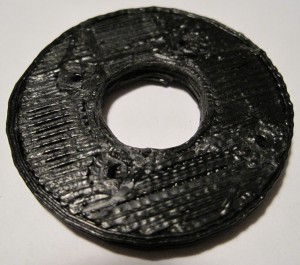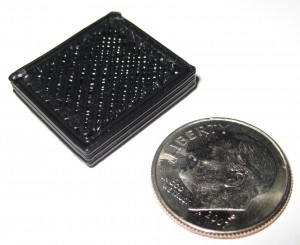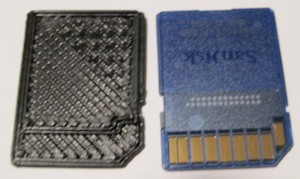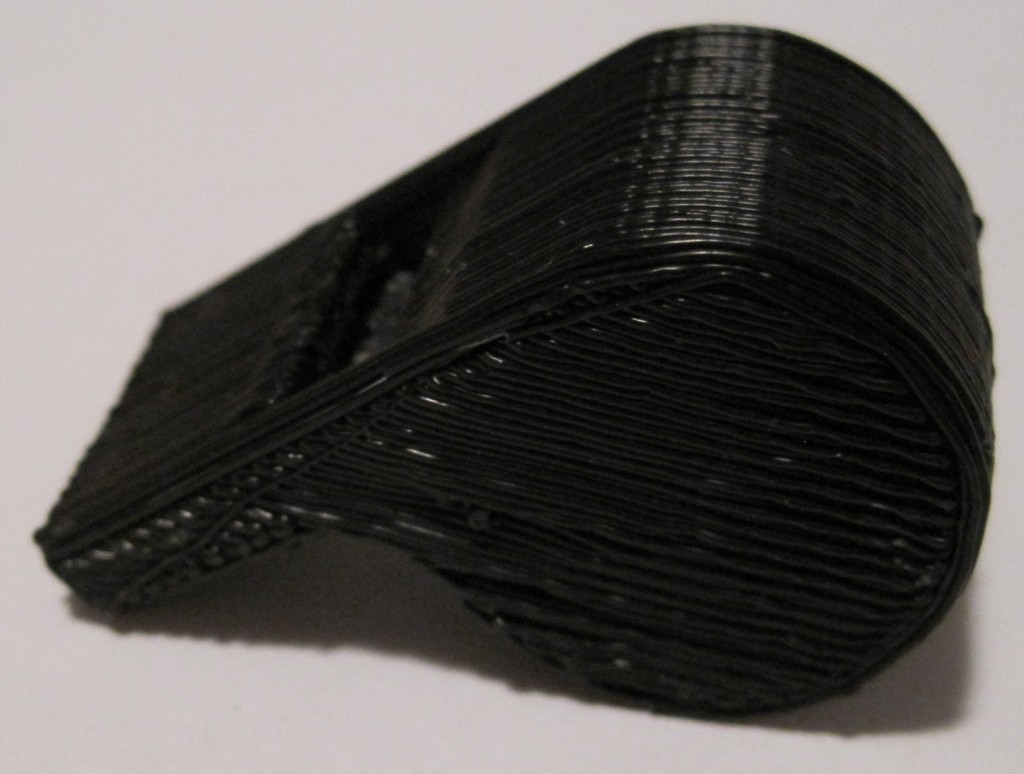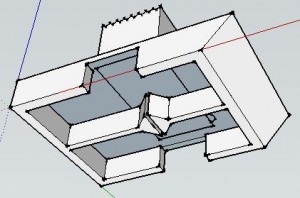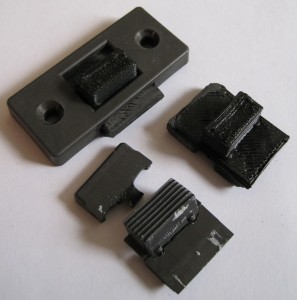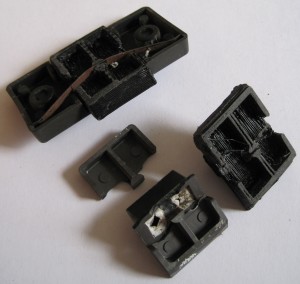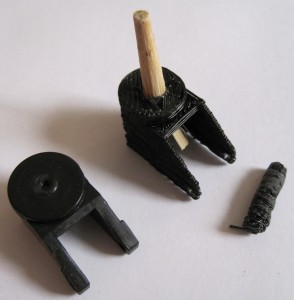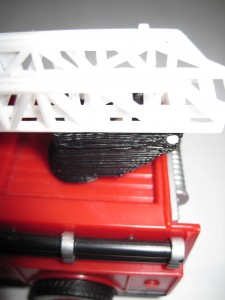Lots of non-robot stuff keeping me busy… but not too busy to print a replacement insulator retainer ring! I should really start a list of the first things you should print once you get a MakerBot. This should be way at the top, even above the Z-axis crank.
From what I gather from the MakerBot operators group, the 5mm acrylic insulator retainer ring that comes with the MakerBot kit will eventually fail. If this happens, the heater will basically pop off and melt into whatever you were building at the time.
Really, it’s all about choices, right? The extruder motor is super slow but super strong. Chances are it will eventually deform some part of your assembly. With this in mind, you can build your heater assembly with and without the nut. Depending upon which you do, different parts will be bearing the brunt of the force exerted by the extruder motor.
If you assemble the heater without the nut below the washer, the majority of the force will be applied by the motor to the filament and into the barrel and nozzle, eventually forcing the nozzle downwards, ruining the PTFE insulator barrier, stripping the PTFE barrier threads, pushing out the nozzle, and making a molten oozing mess of everything.
If instead you assemble the heater with the nut below the washer, the nut will hold the washer in place and the majority of the downwards force applied by the extruder motor will be placed on the insulator retainer ring. If the insulator barrier ring fails, it will crack or shatter dropping the heater into whatever you were building.
The good news about the second method is that its pretty easy to print up a replacement insulator retainer ring to keep handy!

